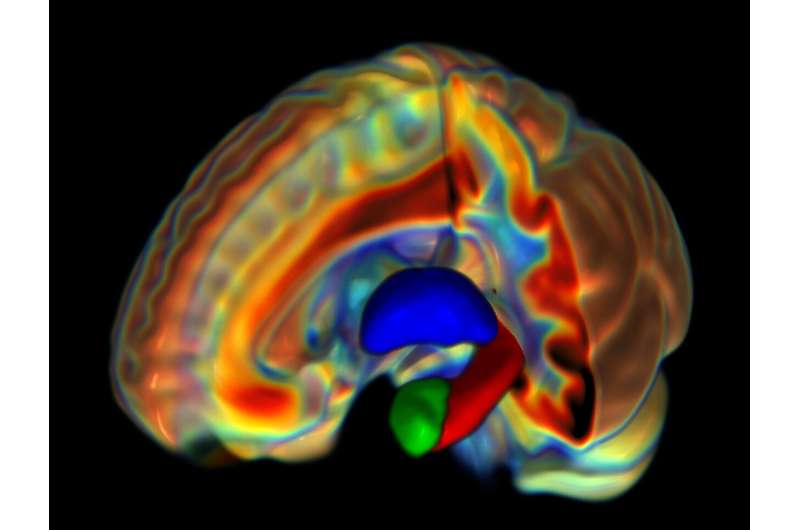July 23, 2024 report
This article has been reviewed according to Science X's editorial process and policies. Editors have highlighted the following attributes while ensuring the content's credibility:
fact-checked
peer-reviewed publication
trusted source
proofread
New study links brain microstructure to gender differences in mental health

A team of neuroscientists and behavioral specialists affiliated with several institutions in the U.S., working with one colleague from New Zealand and another from Canada, has found differences between male and female brain structure in areas associated with decision-making, memory processing and handling emotions.
In their study, published in the Proceedings of the National Academy of Sciences, the group compared more than 1,000 brain scans to better understand why men and women are more prone to different kinds of brain illness.
Prior research has shown that male babies are three times as likely to be diagnosed with autism as they grow older than are female babies—they are also twice as likely to be diagnosed with ADHD. On the other hand, female babies are almost twice as likely to be diagnosed with anxiety or mood disorders later in life than are boys.
Mental health specialists have wondered for many years why there are differences, and many suspect that it is due to physical brain differences between the genders. The research team believes they may have found evidence for such differences.
To spot possible gender differences in the brain, the researchers focused their attention on subcortical gray matter regions that prior researchers have associated with mental health, including the amygdala and the thalamus. They then analyzed MRI scans of 1,065 male and female brains, looking for differences in brain microstructure, such as the way cells are concentrated, their arrangement or even their physical characteristics.
The research team found what they describe as "large, sex-related differences in microstructures." They noted that such changes were still apparent after adjusting for age and the relative size of the brains under study. They also found diffusion metrics in the amygdala and thalamus that they believe could be associated with mental disorders such as anxiety, ADHD, social skills issues and depression.
They suggest that further study of diffusion MRI imagery could provide more insight into gender-based brain disorders.
More information: Richard Watts et al, Sex and mental health are related to subcortical brain microstructure, Proceedings of the National Academy of Sciences (2024). DOI: 10.1073/pnas.2403212121. www.pnas.org/doi/full/10.1073/pnas.2403212121
© 2024 Science X Network





















